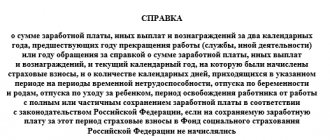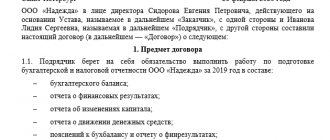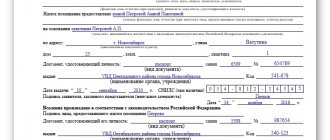Organizations carrying out various types of work are required to record the progress of their implementation in the relevant documents. As such, domestic legislation provides for a formalized act of acceptance of completed work KS-2 and a certificate of their cost KS-3.
If you do not find the document you need on our website, simply leave a comment indicating your email. You will receive the document you need, and it will also be published shortly on our website - certificates of completed work.
- 1 What are KS-2 and KS-3 used for?
- 2 How to correctly fill out KS-2 and KS-3 2.1 Nuances of filling out KS-2
- 2.2 Nuances of filling out KS-3
Form of the unified form KS-2
The act of acceptance of completed work - form KS-2, a form, a sample of which you can download in the article, was approved by Resolution of the State Statistics Committee No. 100 of November 11, 1999.
However, in accordance with the current legislation and in agreement with the customer, the contractor can make adjustments to the formal form of the act based on the needs of a particular business entity, if this does not run counter to the current legislation of the Russian Federation and the interests of society. In the article you can download for free KS-2 and KS-3 - sample filling 2021, Excel. According to Rosstat Letter No. 01-02-9/381, filling out the act is strictly mandatory for each performer. Based on KS-2, the contractor delivers, and the customer accepts, construction, installation and repair work at residential, industrial and civil facilities. Thus, by signing the KS-2 act, he confirms that there are no complaints about the quality and volume of work performed. In the article you will be able to fill out KS-2 in 2021.
Main aspects of design
There are a number of nuances, knowledge of which will help when preparing the paper. Among them are:
- if the amount in the estimate for services is indicated including VAT, then to obtain data without a surcharge you will need to subtract 20% from it;
- if the initially planned price changes, the certificate reflects this moment by indicating the cost of unplanned expenses;
- The certificate form cannot be changed.
It doesn't take much time or effort to fill out the paper. If the person in charge knows about all the nuances, then it takes no more than 15 minutes to complete the registration correctly.
How to fill out
We will provide a sample of filling out forms KS-2 and KS-3; you can download Excel 2020 for free.
Let's start with the first of them - form KS-2, the sample for filling out 2020 will be as follows. First of all, the title part of the document is drawn up:
- the unified form KS-2 has a code according to OKUD - 0322005;
- the lines “Investor” (if any), “Customer” and “Contractor” are filled in in accordance with the exact legal data about the organizations: full name, legal form, legal address, telephone numbers, fax numbers, OKPO;
- in the “Construction” field the name of the construction site and its address are entered, and in the “Object” position - the full name of the construction project;
- Next, the type of activity according to OKDP is entered into KS-2;
- indicate the number and date (DD.MM.YYYY) of the agreement (contract) in the appropriate column;
- the number and date of generation of the form, as well as the reporting period under the above contract are indicated;
- the estimated cost of repairs, installation, construction, which were carried out by the contractor and for which he reports to the customer in accordance with the concluded contract, is written down. The amount must be indicated in rubles.
We continue to figure out how to fill out KS-2; an example of filling out the tabular part of the document will look like this. Let's clarify how to fill in each column separately:
- Serial numbers.
- “Item number according to the estimate” - numbering of the work performed or the material used based on the estimate documentation. If the form is filled out in accordance with several estimates, then the numbering may be duplicated.
- When form KS-2 is drawn up, the filling sample requires that the name of each item be strictly in accordance with the estimate documentation.
- “Unit rate number” - codes from estimates based on FER collections.
- “Unit of measurement” - indicates the qualitative designation of the actions performed under the contract.
- This column contains the quantitative designation of contracting activities. It is forbidden to indicate the percentage of completion.
- Column 7 includes unit price data based on unit rate books. If contract prices are fixed, then dashes are entered in the column.
- The last column is filled in in any case. It indicates the cost of contract work either in accordance with the contract or on the basis of a calculated indicator from the FER collections.
If representatives of the customer organization had comments on the timing, volume or quality of work performed, they also need to be recorded in the KS-2 act, the sample of which you now know how to correctly fill out.
IMPORTANT!
The finished form KS-2 - an act of acceptance of work performed - is signed by the managers of the contractor and the customer (after verification and approval). For approval, you must provide a certificate in form KS-3. In the article you can download KS-2, KS-3 (sample filling in 2020) for free in excel.
Update from 03/24/21
1) In “Additional settings” a checkbox has been added “TIN/KPP in details”
When this flag is set in the details of the organization and the counterparty, the TIN and KPP are displayed
2) When generating printed forms, the number is displayed without prefixes and leading zeros - i.e. how this happens when creating standard printed forms
How to fill out the KS-3 certificate
Acts KS-2 and KS-3, a sample for which we provide in the article, are drawn up at the stage of closing the contract. KS-3 is filled out in duplicate on the basis of the state contract and the KS-2 act, the 2021 sample for which we described above. If a third party is involved in construction, for example an investor, then the contractor prepares a document for them as well. The article provides a unified form KS-2 and KS-3, a sample filling, instructions for filling. They will help prevent mistakes.
The certificate includes data on the cost and expenses of the repairs, installation, construction, as well as costs that were not taken into account in the estimate documentation and the contract. This could be, for example, an unexpected increase in prices for rental equipment or construction materials. The certificate can be filled out not only for the entire construction project, but also for its individual part. In this case, you need to indicate the full cost of the entire object.
Step 1. Title page.
Form KS-2 and KS-3, a sample of which we are considering, begin to be filled out from the title part.
You need to enter:
- data of the customer, contractor and, if necessary, investor. Provide full name and contact information;
- OKPO code;
- name and address of the construction site;
- details of the government contract;
- current certificate number and date;
- reporting period in which the work was carried out.
Step 2. Fill out the table.
As in the case of KS-2, the sample filling in 2021 for the KS-3 reference continues with filling out the tabular part. Carefully enter the information in the following columns:
- Serial number.
- Description of the work and the object or its stage, as well as equipment and materials. If the contract and documentation allow, you can divide the work performed by the type of technical equipment used.
- Code of types of work.
- Cumulative price.
- The cost determined by the contractor at the beginning of the reporting period (year).
- The total cost of the completed contract for the reporting period.
At the end of the tabular part, the “Total” lines are filled in - the final amount of construction performed, as well as the cost including VAT. At this point, the sample filling of KS-2 and KS-3 can be considered complete.
Step 3. We certify the document.
At the end of the document, responsible persons from the customer and the contractor must sign. The certificate must also be certified by the seals of the organizations.
We looked at filling out KS-2 and KS-3; you can download a sample of filling out the latter below.
Explanations on the topic
| Main points | Document details | Download |
| On filling out the unified form No. KS-2 when concluding a government contract within the framework of Federal Law No. 94-FZ of July 21, 2005 | Letter of the Ministry of Economic Development No. D22-1743 dated September 27, 2010. | |
| In the letter, the Federal State Statistics Service explains the procedure for using unified forms of primary accounting documentation and filling out unified forms of primary accounting documentation in conventional monetary units | Letter of the Federal State Statistics Service dated May 31, 2005 No. 01-02-9/381. |
About the author of this article
Alexandra ZadorozhnevaAccountant, project expert Practicing accountant. I have been working since the beginning of my studies at the university. I have experience in both commerce and budgeting. From 2006 to 2012 she worked as an accountant-cashier and personnel officer. From 2012 to the present - chief accountant in a budgetary institution. In addition to direct accounting, I am involved in purchasing and economic planning activities. I have been writing feature articles for specialized publications for 4 years.
Legal basis
The registration form is approved by the Federal State Statistics Service. For future accounting, companies need to use a unified sample certificate. The paper will need to indicate the cost of the work without taking into account the premium cost. VAT is indicated as a separate item.
Among the basic rules for the design of KS-3, which are dictated by legislative acts, there are:
- use only a regulated sample to fill out;
- entering information without using abbreviations;
- mandatory writing of the name of the organization of the customer, contractor and investor (if any) indicating the organizational and legal form.
It is worth remembering that this certificate belongs to the category of documents of strict reporting. The accountant is responsible for incorrect preparation.
Form RD-11-05-2007 as an example of filling out a general work log
You can download a completed sample of the specified form RD-11-05-2007 on our website:
The main differences in filling out the title page of the form in question and the previous one in terms of filling out the title page:
- in the form RD-11-05-2007 it is assumed to indicate the name of the developer, the customer and the organization that actually carries out the construction;
- in the form RD-11-05-2007 it is expected to indicate the persons responsible for construction control - from the customer or developer or from the company that carries out the construction;
- in the form RD-11-05-2007, the state supervisory authority puts marks on the title page.
The main differences between the form RD-11-05-2007 and KS-6 in terms of filling out section 1:
- the name of the company carrying out the construction is indicated;
- Full name is indicated. and the position of a representative of the construction company;
- information about the document confirming the employee’s qualifications is not indicated.
Regarding section 2 of the general work log:
- this section of the RD-11-05-2007 form coincides in purpose with section 4 in the KS-6 form;
- The information indicated in the section is certified by the signature of a representative of the developer or the customer.
Regarding Section 3
- this section coincides in purpose with section 5 in the KS-6 form;
- the position and full name are indicated. representative of the company that carries out the construction.
As for sections 4 and 5, section 3 in form KS-6 corresponds to those in purpose, however, the structure of sections in form RD-11-05-2007 differs significantly from that in form No. KS-6. Thus, in sections 4 and 5 of the form under consideration the following is recorded:
- serial number of the control activity;
- control data;
- information about identified deficiencies, the deadline and date for their elimination;
- Full name, position of representative of the developer or customer.
Besides:
- the information in section 4 is certified by the signature of a representative of the developer or customer;
- the information in section 5 is certified by the signature of a representative of the company carrying out the construction.
Section 6 of the general work log in form RD-11-05-2007 generally corresponds in structure and purpose to section 2 in form KS-6.
Section 7 corresponds in purpose to section 6 in the KS-6 form. Main differences:
- the form RD-11-05-2007 records the period and date for eliminating the violations identified during the supervisory inspection;
- The number of the event is recorded in order.









